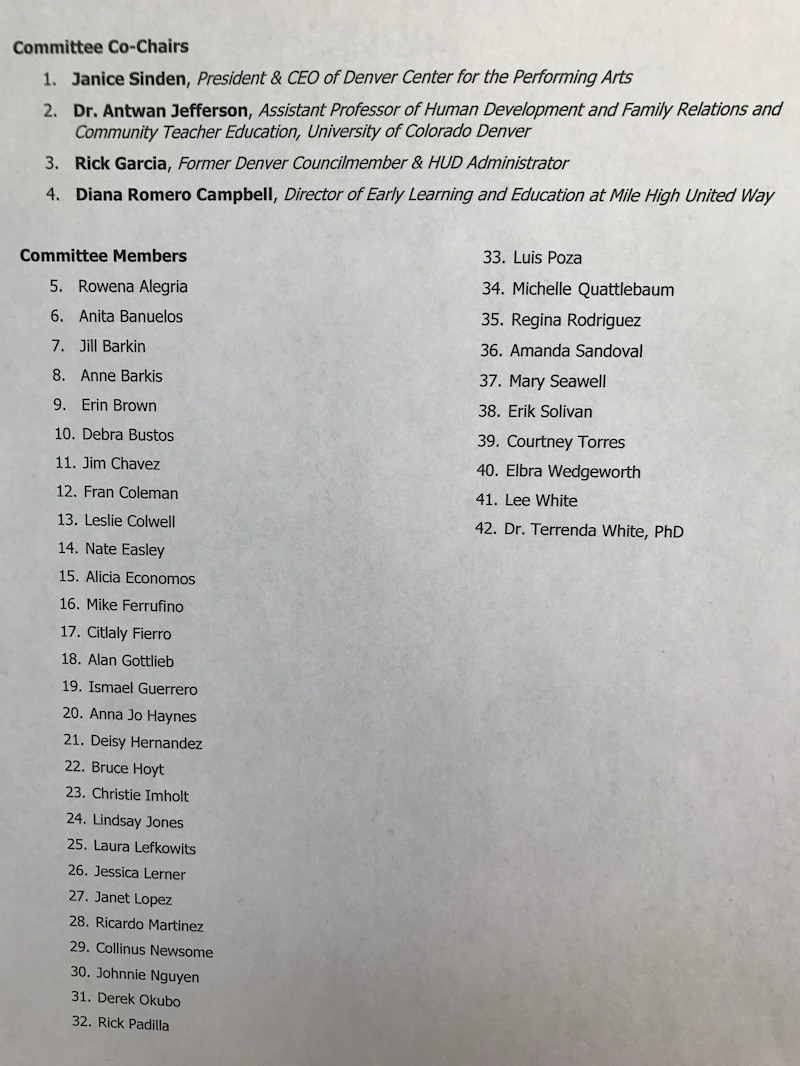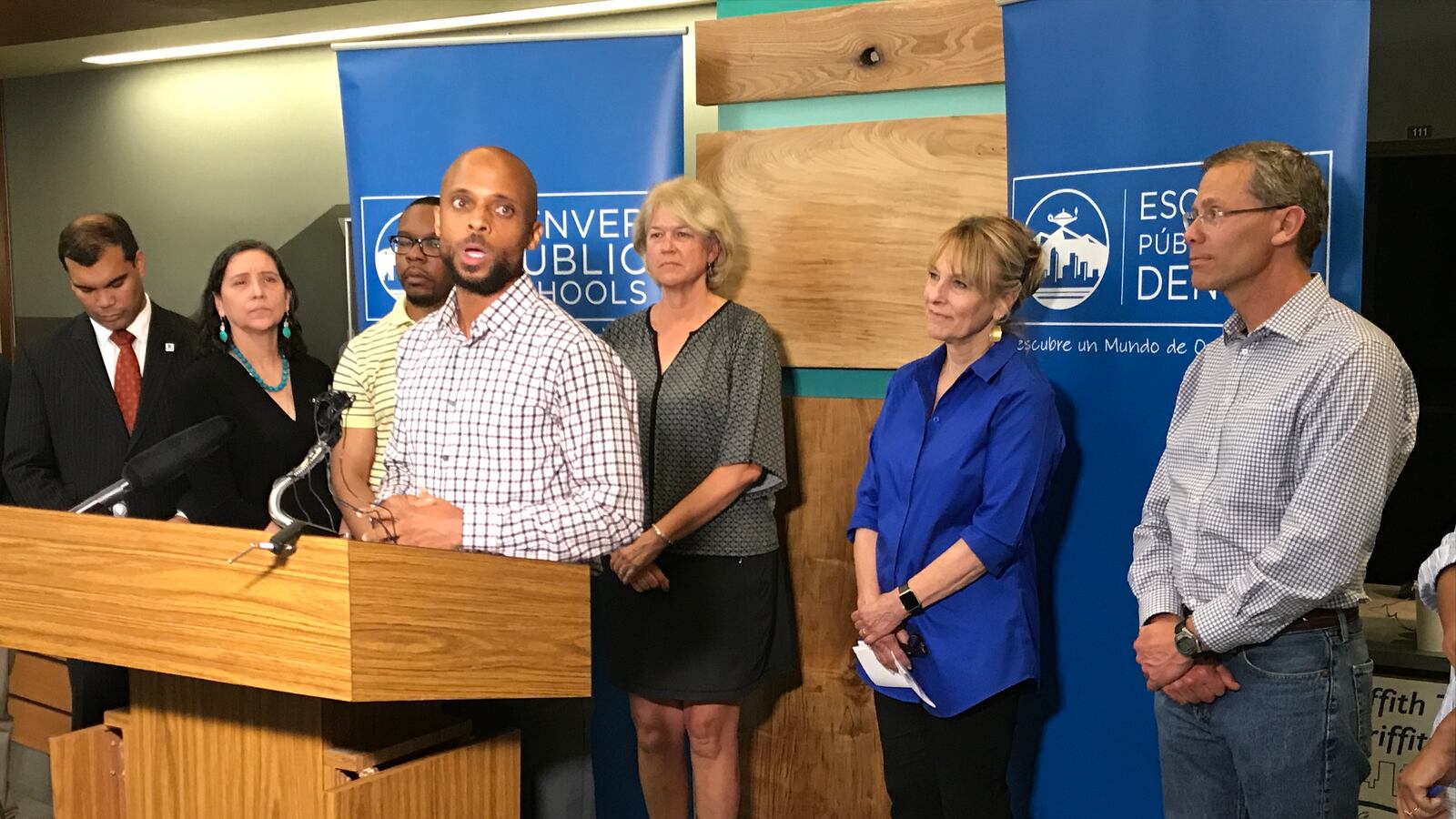A citywide effort to review how rapid gentrification is changing Denver’s public schools — and come up with ideas to combat the most pernicious effects — kicked off Monday.
City and school district officials shared the podium at a press conference at Denver Public Schools headquarters to talk about creating stronger schools at a time when rising housing prices are driving low-income families out of the city and many schools are segregated.
“The research is very clear that integration benefits all kids,” Superintendent Tom Boasberg said. “…Our students tell us with such passion how much they want to be in integrated and inclusive schools, where all students celebrate and value their heritage and culture.”
A 42-member committee established by the school board will make recommendations to the board on how to drive racial and economic integration through policies on school boundaries, school choice, enrollment, academic programs and more. Its work is expected to take six months.
“This work is going to be hard, it’s going to be real, it’s going to get messy at times … but it’s such important work in the future of our kids,” said school board president Anne Rowe.
More than 100 people applied to serve on the Strengthening Neighborhoods Committee, according to the district. DPS leaders chose the 42 members to represent “the ethnic, geographic and professional diversity” of the city. Over half are current DPS parents, and more than 60 percent are people of color.
The committee includes former DPS school board members Nate Easley, Mary Seawell, Bruce Hoyt, Laura Lefkowits and Lee White. (See the full list of committee members at the end of this story.)
It also includes several Denver city staffers: Erin Brown, executive director of the Office of Children’s Affairs; Derek Okubo, executive director of Human Rights and Community Partnerships; and Rowena Alegria, who works in that same department.
Ismael Guerrero, executive director of the Denver Housing Authority, is also on the committee.
“We recognize that schools do not exist in a vacuum,” Boasberg said, emphasizing the importance of working with the city on such a wide-ranging issue.
A mother of three DPS students asked officials a question that captured that wide range.
“What is the main purpose of the committee? To stop the gentrification?” Gloria Borunda asked at the press conference. “I live in southwest Denver and I see a lot of my friends have to leave the area. … I think it is affecting our students in a negative way.”
School board member Lisa Flores responded that while it’s not the school board’s role to make housing policy, “we’re creating a space to have a dialogue with all these interested parties.”
Erik Solivan, executive director of the new Denver Office of Housing and Opportunities for People Everywhere and a member of the committee, added that the city is invested in working with DPS to think about how it can better support families living in changing neighborhoods.
The committee has four co-chairs: Janice Sinden, CEO of the Denver Center for the Performing Arts and former chief of staff to Mayor Michael Hancock; Rick Garcia, a former city council member and U.S. Department of Housing and Urban Development administrator; Diana Romero-Campbell, director of early learning and education at Mile High United Way; and Antwan Jefferson, assistant professor of urban community teacher education at the University of Colorado Denver. Jefferson is a DPS parent and a former teacher at Montbello High School.
Other high-profile members include Elbra Wedgeworth, chief government and community relations officer for Denver Health; Ricardo Martinez, co-executive director of advocacy group Padres & Jovenes Unidos; and Anna Jo Haynes, president emeritus of Denver’s Mile High Early Learning Centers and the mother of DPS school board member Happy Haynes.
Journalist and writer Alan Gottlieb, who founded Chalkbeat predecessor EdNews Colorado and co-founded Chalkbeat, is also on the committee, as is Jill Barkin, a vice president of board governance at Teach For America and a member of Chalkbeat’s board of directors.
DPS has already taken several steps to try to increase integration in its schools. One was the creation of several enrollment zones, which are essentially bigger school boundaries. Students are asked to choose one of several schools within the boundary instead of being assigned to the school closest to where they live. The zones for middle schools have had mixed results in fostering integration.


